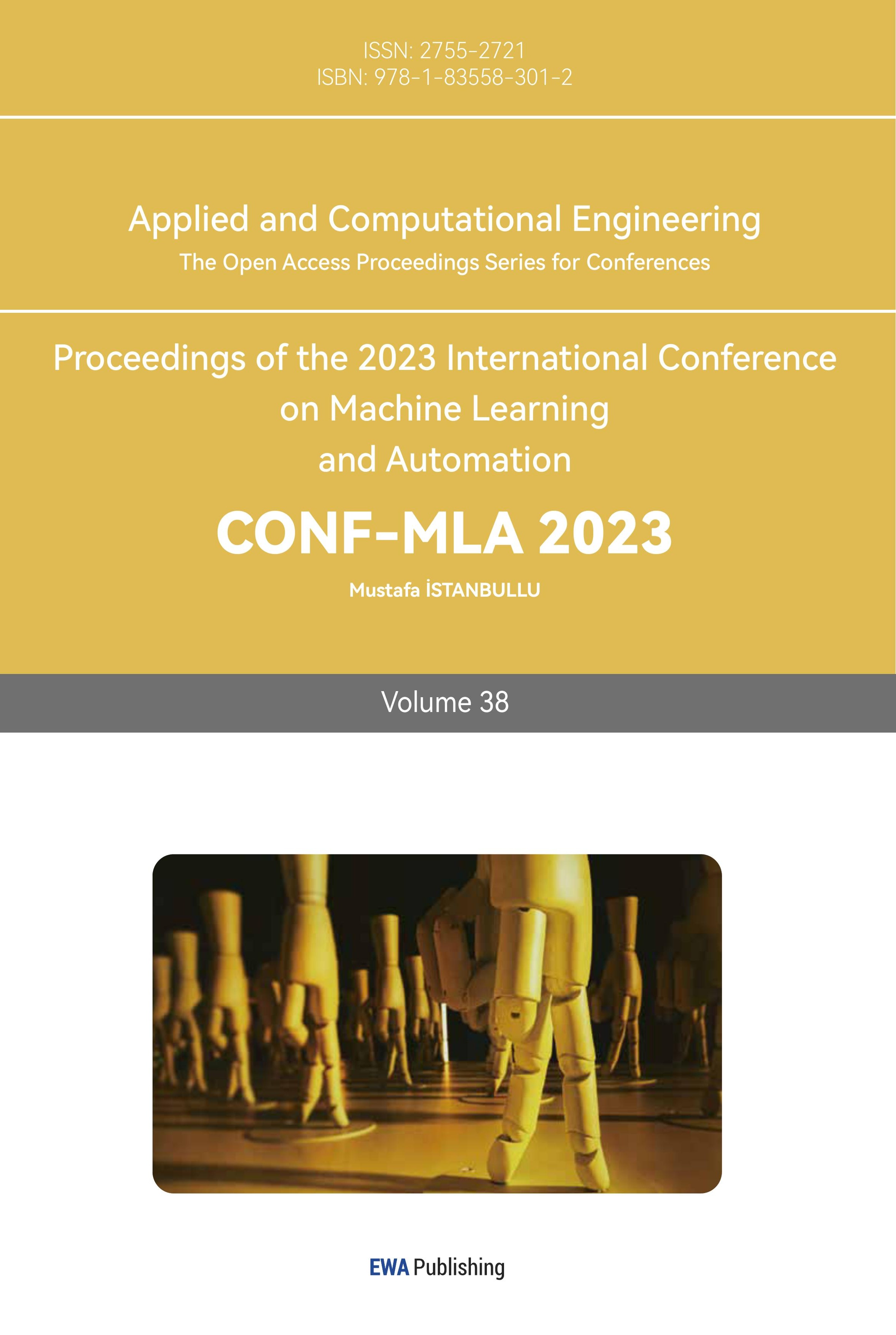References
[1]. Yang Wenting. Research and implementation of sentiment analysis algorithm based on microblog [D]. Southwest Jiaotong University, 2015.
[2]. YANG Jian, CHEN Wei. Research on Three Web Crawler Technologies Based on Python [J]. Software Engineering, 2023, Vol. 26(2): 24-27,19.
[3]. Yu Hui, Xie Jun, Xiong Hao, et al. Statistical machine translation method based on chapter context [J]. Journal of Chinese Information Technology, 2013, 27(2): 86-91.
[4]. Zhang Qiyu, Zhu Ling and Zhang Yaping. Review of Chinese word segmentation algorithm [J]. Information Exploration, 2008(11): 4.
[5]. Lin Dongsheng. Research and implementation of Chinese word segmentation algorithm [D]. Northwest University, 2011.
[6]. Cai Jinzhu, Lai Youfu, Han Lulu, et al. Research on image recognition algorithm of wind turbine based on visualization [J]. Modern Industrial Economics and Informatization, 2023, Vol. 13(5): 277-280.
[7]. Wu Yingliang, Wei Gang, Li Haizhou. A Chinese word segmentation algorithm based on the n-gram model and machine learning [J]. Journal of electronics & information technology, 2001, 23(11): 6.
[8]. Yu Chuanming, Yuan Sai, Wang Feng, et al. Research on the scale adaptation of text sentiment analysis algorithm in big data environment: using Twitter as data source [J]. Library and Information Service, 2019, 63(4): 11.
[9]. Wang Xia, Zheng Ning, Xu Ming, et al. Bayesian mail filtering model based on Chinese inflection word matching [J]. Computer Applications and Software, 2010(1): 4.
[10]. Wei Xinyu, Li Binyong, Chen Hongdou et al. Filter and Analysis of Sensitive Words on Web Page Based on Public Opinion Data [J]. Cybersecurity Technology and Application, 2022, (7): 38-39.
[11]. Liu Tengjie. Application of sentiment analysis in tourism research: review and prospect [J]. Tourism Overview, 2023, (1): 48-52.
Cite this article
Bai,J. (2024). Research on sentiment analysis based on the Bilibili video barrage. Applied and Computational Engineering,38,184-191.
Data availability
The datasets used and/or analyzed during the current study will be available from the authors upon reasonable request.
Disclaimer/Publisher's Note
The statements, opinions and data contained in all publications are solely those of the individual author(s) and contributor(s) and not of EWA Publishing and/or the editor(s). EWA Publishing and/or the editor(s) disclaim responsibility for any injury to people or property resulting from any ideas, methods, instructions or products referred to in the content.
About volume
Volume title: Proceedings of the 2023 International Conference on Machine Learning and Automation
© 2024 by the author(s). Licensee EWA Publishing, Oxford, UK. This article is an open access article distributed under the terms and
conditions of the Creative Commons Attribution (CC BY) license. Authors who
publish this series agree to the following terms:
1. Authors retain copyright and grant the series right of first publication with the work simultaneously licensed under a Creative Commons
Attribution License that allows others to share the work with an acknowledgment of the work's authorship and initial publication in this
series.
2. Authors are able to enter into separate, additional contractual arrangements for the non-exclusive distribution of the series's published
version of the work (e.g., post it to an institutional repository or publish it in a book), with an acknowledgment of its initial
publication in this series.
3. Authors are permitted and encouraged to post their work online (e.g., in institutional repositories or on their website) prior to and
during the submission process, as it can lead to productive exchanges, as well as earlier and greater citation of published work (See
Open access policy for details).
References
[1]. Yang Wenting. Research and implementation of sentiment analysis algorithm based on microblog [D]. Southwest Jiaotong University, 2015.
[2]. YANG Jian, CHEN Wei. Research on Three Web Crawler Technologies Based on Python [J]. Software Engineering, 2023, Vol. 26(2): 24-27,19.
[3]. Yu Hui, Xie Jun, Xiong Hao, et al. Statistical machine translation method based on chapter context [J]. Journal of Chinese Information Technology, 2013, 27(2): 86-91.
[4]. Zhang Qiyu, Zhu Ling and Zhang Yaping. Review of Chinese word segmentation algorithm [J]. Information Exploration, 2008(11): 4.
[5]. Lin Dongsheng. Research and implementation of Chinese word segmentation algorithm [D]. Northwest University, 2011.
[6]. Cai Jinzhu, Lai Youfu, Han Lulu, et al. Research on image recognition algorithm of wind turbine based on visualization [J]. Modern Industrial Economics and Informatization, 2023, Vol. 13(5): 277-280.
[7]. Wu Yingliang, Wei Gang, Li Haizhou. A Chinese word segmentation algorithm based on the n-gram model and machine learning [J]. Journal of electronics & information technology, 2001, 23(11): 6.
[8]. Yu Chuanming, Yuan Sai, Wang Feng, et al. Research on the scale adaptation of text sentiment analysis algorithm in big data environment: using Twitter as data source [J]. Library and Information Service, 2019, 63(4): 11.
[9]. Wang Xia, Zheng Ning, Xu Ming, et al. Bayesian mail filtering model based on Chinese inflection word matching [J]. Computer Applications and Software, 2010(1): 4.
[10]. Wei Xinyu, Li Binyong, Chen Hongdou et al. Filter and Analysis of Sensitive Words on Web Page Based on Public Opinion Data [J]. Cybersecurity Technology and Application, 2022, (7): 38-39.
[11]. Liu Tengjie. Application of sentiment analysis in tourism research: review and prospect [J]. Tourism Overview, 2023, (1): 48-52.









